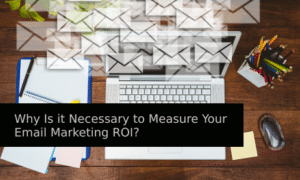Unlike warm or hot leads who have shown interest, cold leads refer to prospects who have not shown any interest in your product or services. That’s where cold email campaigns become useful. Typically, the goal is to initiate a connection, introduce your brand, and ultimately nurture these cold contacts into potential customers or clients.
A well-curated email list stands as a strong foundation for successful cold email campaigns. These campaigns are often used in sales, marketing, or business development to expand reach and generate new opportunities.
Today, we look deeper into what an email list is and why you need one. We’ll also explore some practical ways to build email lists that are effective. Ready? Let’s dive in!
What is an email list?
An email list is a pool of email addresses collected from leads who have signed up to get emails from you. Typically, these leads subscribe to your email list when they fill out a sign up form on your website. However, for cold emails, this may not always be the case, since the aim is to reach out to prospects who have not shown any interest in your products or services.
So, we can say that a cold email list is a collection of email addresses of people who you intend to engage with through cold email campaigns.

Why you need to start building your list
Having understood what an email list is, here’s why should start building one:
- Ownership and control
Unlike social media platforms or third-party channels, an email list grants you full ownership and control. This ensures that your marketing efforts are not subject to the ever-changing algorithms of external platforms, giving you a stable and reliable channel for connecting with prospective customers.
- Relationship building
Building an email list is also vital to nurturing potentially favorable relationships. Beyond mere transactions, you get to establish a personal rapport with your audience. This way, you can build a sense of connection, especially when you send emails that are relatable and show the true value that customers can get from your brand.
- Cost-effective
Email campaigns are a cost-effective means of reaching your audience compared to traditional advertising methods. Statistics from SuperOffice reveal that email delivers the best returns on your marketing investments.

According to data by Litmus, marketers can make $36 for every $1 spent on email marketing.
Also, email marketing tools like MailChimp and GetResponse offer automation features that allow you to set up and schedule campaigns in advance. With this, you can reduce frequent manual intervention involved with sending emails, saving you time and resources in the long run.
- Higher engagement
Finally, a carefully crafted email copy sent directly to your lead’s inbox captures attention and encourages interaction. This can potentially lead to increased conversions and a warmer response from your audience.
5 Strategies for building a high-quality email list for cold outreach
Using an email finder software is one effective way to find leads for your cold email campaigns. However, there are several other ways to build email lists for your cold email outreaches. Some of them include using lead magnets, creating landing pages, and using social media. In this section, we’ll explore these notable strategies.
1. Use lead magnets
Lead magnets are essentially irresistible incentives offered to your audience in exchange for their contact details— primarily their email addresses. These incentives come in various forms, such as ebooks, whitepapers, exclusive guides, templates, discounts, or any valuable content that addresses your audience’s needs or interests.
Strategically place lead magnets where your audience can see them. You can showcase your lead magnets using attention-grabbing pop ups as seen in the example below:

You can also add the lead magnets within your web content like articles or blog posts. Just like what we have below:

Create interest in your lead magnets by telling prospects what they’ll gain. For instance, what will they learn from the ebook you want them to download? With this, you may be able to get them to sign up for your regular email campaigns.
2. Create dedicated landing pages
Create dedicated landing pages to help you collect email addresses from potential leads. These landing pages can be created for the lead magnets we discussed above. It can also be for special offerings that you have for your potential customers. For example, Huree uses the landing page below to offer exclusive access to new podcasts in exchange for email addresses.

When creating your landing page, use creative and relevant images that resonate with your audience. Visuals should complement the rest of your content. For instance, you can share an infographic that summarizes the content of your lead magnet.
The copy on your landing page should be crystal clear and easily readable. Avoid jargon and keep it simple. Convey the value of what you’re offering and how it addresses your audience’s needs or interests and add a prominent call to action.
Also, integrate a user-friendly sign-up form for collecting email addresses. Keep it simple, asking for essential information. For instance the visitor’s name and email address. Here’s an example:

Ensure that the form is easy to spot. You can place them at the top or bottom of the landing page.
Finally, remember to optimize the landing page with the relevant keywords and ensure that they are easy to view on mobile devices.
3. Leverage social media
Social media is a great starting point for your marketing efforts. Getting more likes on Instagram or followers on X (formerly Twitter) is good for your engagement. However, your strategy should also involve moving your active users into your email community so that you can have a more stable and personal communication channel.
Typically, social media platforms like LinkedIn, X, or Instagram offer a dynamic space to connect with prospects and potential business partners.
For starters, you can reach out directly to prospects via direct messages or by simply interacting with their content. This works especially well when you’re dealing with B2B audiences like enterprise SaaS customers where one-on-one interactions are critical. Platforms like LinkedIn and Twitter or X will help you kickstart the conversation which you can then take off the platform and into your emails.
Additionally, you can use social channels to shine a spotlight on your lead magnet. This would work well in both B2B and B2C industries where mass marketing is vital. Create social media posts that clearly explain what you’re offering and share teasers to spark interest. You can add your email subscription landing page link to your social media profile bio.
Encourage your social media followers to follow you and join your email list.
Also, consider running ads on social media platforms to reach a specific audience based on demographics, interests, and behaviors. Here’s an example below:
Apart from promoting your email newsletters, you also want to create engaging social media marketing campaigns that thrive on high-quality and compelling content.
4. Engage in networking events
Engaging in networking events is another huge opportunity to build high-quality email lists. These industry-specific gatherings— whether virtual or in-person events— offer more than just an opportunity to collect contacts. They also serve as a platform to establish genuine relationships.
When attending networking events, bring something valuable to the table—whether it’s insights, expertise, or a unique perspective. Contributing meaningfully to the conversation not only enhances your credibility but also makes people more likely to be drawn to you. Your insights may also be good conversation starters at these events.
When it comes to collecting contacts at networking events, do so professionally, don’t be forceful. You simply need to bring this up in a natural way. Respect individuals’ privacy and ensure they are comfortable sharing their information.
You can also go with your physical or digital business card. It’s a smart move if this business card has a barcode that takes new prospects to a landing page where they can easily share their contact information with you.
5. Invest in referral programs
Another powerful way to grow your email list is by turning your existing subscribers into enthusiastic advocates. You can do this through well-crafted referral programs.
Statistics reveal that 92% of consumers trust referrals from friends and family more than other advertising methods.

Referral programs tap into the loyalty and satisfaction of your current customer base. By incentivizing loyal customers to refer friends and colleagues you can potentially extend your organic reach.
Referral programs can also maximize social proof as they rely on the credibility and trust your existing customers or colleagues have built with their networks. Also, When a satisfied subscriber recommends your content or offerings to their network, it’s typically more relatable than the regular promotional content you may share occasionally.
To run a successful referral campaign:
- Communicate the benefits of the referral program to your existing subscribers.
- Ensure that the incentives offered align with the interests and preferences of your audience.
- Use clear and simple processes for subscribers to refer others, minimizing any friction in the referral journey. For instance, you can have them share a pre-written message with their family and friends through a social media post or private message.
- Regularly acknowledge and appreciate the efforts of those who participate in the program.
Overall, leveraging a thorough referral campaign can help you build a solid email list with an audience that’s likely to be more receptive to your email campaigns.
In Closing
Building an email list is an effective approach to harnessing the power of email marketing— whether you are reaching out to cold or warm leads. Having an email list gives you more ownership and control over your marketing campaigns, unlike social networks which may be affected by changing algorithms. Engaging with your email audience can also lead to a long-lasting relationship with your prospects. These are some of the benefits we explored in this post.
To recap, some effective ways to build email lists include using lead magnets, creating landing pages, leveraging social media, attending networking events, and investing in referral programs.
With these actionable steps, you’re well on your way to growing your email list and fostering meaningful connections that drive your marketing success. Good luck!
Author’s Bio
Owen Baker is a content marketer for Voila Norbert, an online email verification tool. He has spent most of the last decade working online for a range of marketing companies. When he’s not busy writing, you can find him in the kitchen mastering new dishes.




